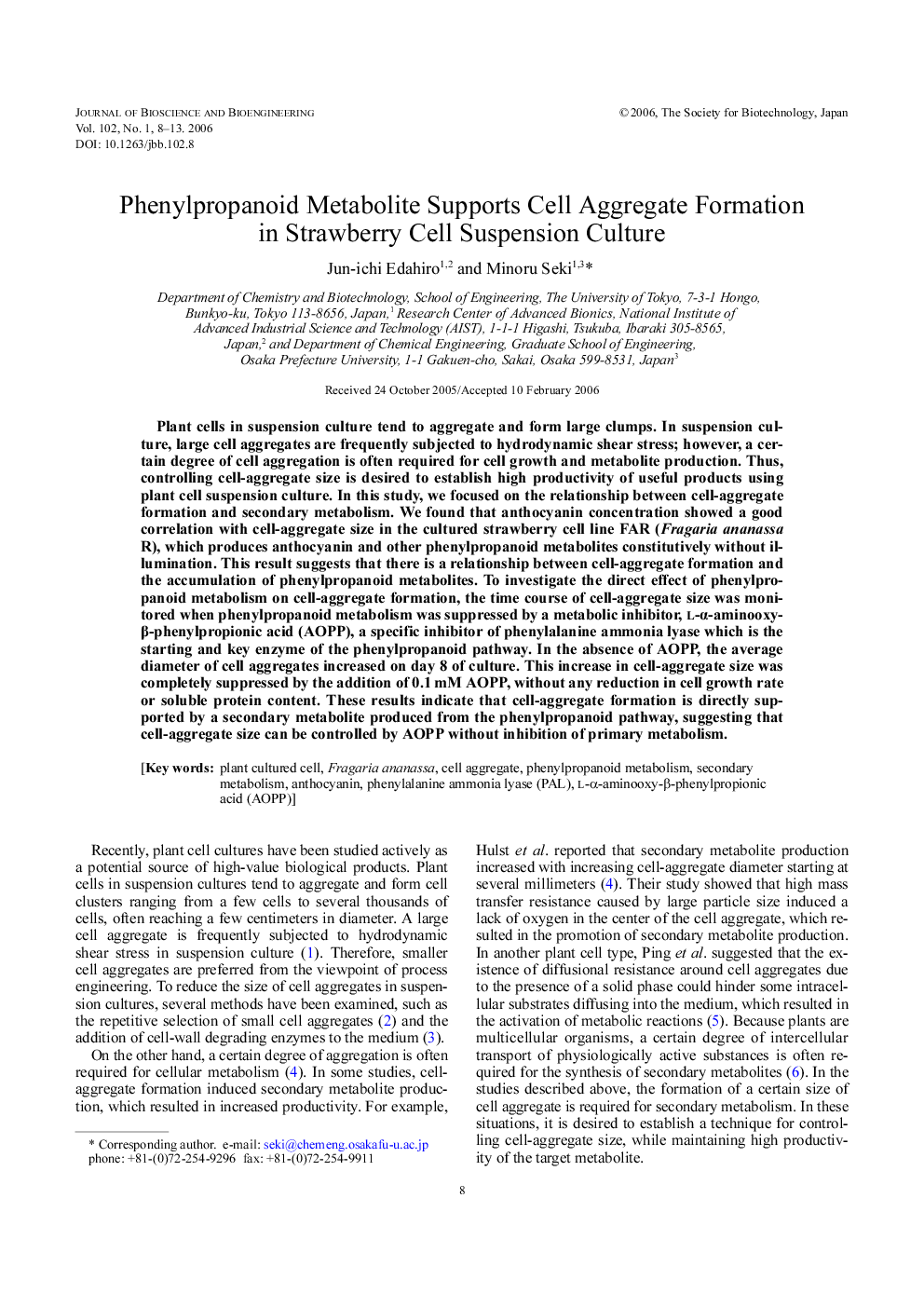| Article ID | Journal | Published Year | Pages | File Type |
|---|---|---|---|---|
| 22204 | Journal of Bioscience and Bioengineering | 2006 | 6 Pages |
Plant cells in suspension culture tend to aggregate and form large clumps. In suspension culture, large cell aggregates are frequently subjected to hydrodynamic shear stress; however, a certain degree of cell aggregation is often required for cell growth and metabolite production. Thus, controlling cell-aggregate size is desired to establish high productivity of useful products using plant cell suspension culture. In this study, we focused on the relationship between cell-aggregate formation and secondary metabolism. We found that anthocyanin concentration showed a good correlation with cell-aggregate size in the cultured strawberry cell line FAR (Fragaria ananassa R), which produces anthocyanin and other phenylpropanoid metabolites constitutively without illumination. This result suggests that there is a relationship between cell-aggregate formation and the accumulation of phenylpropanoid metabolites. To investigate the direct effect of phenylpropanoid metabolism on cell-aggregate formation, the time course of cell-aggregate size was monitored when phenylpropanoid metabolism was suppressed by a metabolic inhibitor, L-α-aminooxy-β-phenylpropionic acid (AOPP), a specific inhibitor of phenylalanine ammonia lyase which is the starting and key enzyme of the phenylpropanoid pathway. In the absence of AOPP, the average diameter of cell aggregates increased on day 8 of culture. This increase in cell-aggregate size was completely suppressed by the addition of 0.1 mM AOPP, without any reduction in cell growth rate or soluble protein content. These results indicate that cell-aggregate formation is directly supported by a secondary metabolite produced from the phenylpropanoid pathway, suggesting that cell-aggregate size can be controlled by AOPP without inhibition of primary metabolism.
